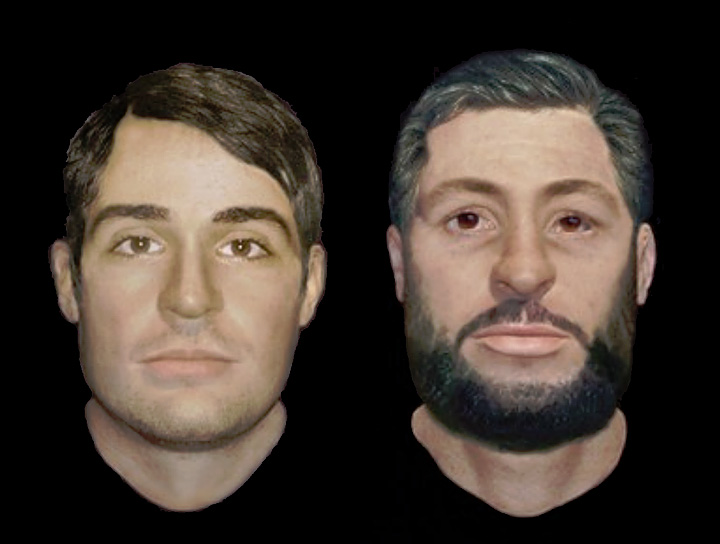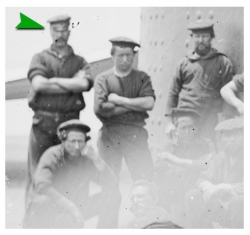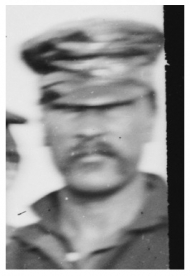
They died in the sinking of U.S.S. Monitor off Cape Hatteras on December 31, 1862. Their remains were found in the turret of that ship, which was recovered from the sea floor 140 years later. Their last moments were probably desperate ones; with the upper deck awash in the cold, black Atlantic, the only way out of the foundering ironclad was up, and up again, through the top of the turret. These two men, and fourteen others, didn’t make it.
On Tuesday, staff from NOAA’s Monitor National Marine Sanctuary revealed facial reconstructions of the skulls of two men whose skeletons were found during excavations of the overturned turret, which became detached from the hull when the ship rolled over. The two nearly-complete skeletons remain in the custody of the Department of Defense’s JPAC Central Identification Laboratory in Hawaii; plaster casts of the skulls were sent to the Forensic Anthropology and Computer Enhancement Services, or FACES, laboratory at Louisiana State University, where sculptors and forensic anthropologists worked to reconstruct the men’s appearance.

The skeletons tell a little about each to the two men. One man was young, in his early 20s, and had had a broken nose. The other man, probably in his early 30s, likely walked with a limp. A tell-tale groove in his teeth suggests they habitually clinched a pipe stem. The facial reconstructions are somewhat speculative. Skin tone, hair color and whiskers are guesswork; the reconstructions have brown eyes, because those are more common than blue. Nonetheless, like the reconstructions of the faces of the Hunley crew, these two faces bring a dramatic, human dimension to sinking, and a connection to events of a century and a half ago.
 Who were these men? Historical and genealogical work continues, but researchers think that the older man may have been Robert Williams. Williams was a 30-year-old native of Wales who was a fireman, one of the crewmen who tended the furnaces heating ship’s two steam boilers. Williams appears in two photos taken on Monitor‘s deck in July 1862, a brawny, deeply-tanned man standing with his arms folded across his chest. Much of his face is obscured by a heavy mustache and a cap with a bill, but the shape of his face that’s visible looks very much like reconstruction of the older
Who were these men? Historical and genealogical work continues, but researchers think that the older man may have been Robert Williams. Williams was a 30-year-old native of Wales who was a fireman, one of the crewmen who tended the furnaces heating ship’s two steam boilers. Williams appears in two photos taken on Monitor‘s deck in July 1862, a brawny, deeply-tanned man standing with his arms folded across his chest. Much of his face is obscured by a heavy mustache and a cap with a bill, but the shape of his face that’s visible looks very much like reconstruction of the older ![]() crew member. But the man in the photograph also appears to be substantially taller than his shipmates, while the older man found in the turret probably stood only about five-foot-six-and-a-half — a very middling height, even by the standards of the 1860s.
crew member. But the man in the photograph also appears to be substantially taller than his shipmates, while the older man found in the turret probably stood only about five-foot-six-and-a-half — a very middling height, even by the standards of the 1860s.
Work will go on trying to identify these men and, possibly, their descendants. In the meantime, some staff at the marine sanctuary hope to have the remains interred at Arlington National Cemetery.
_______________________________________________________________________________________
Facial reconstruction images via National Oceanic and Atmospheric Administration. Historic photos visa Library of Congress.
Andy Hall is a Texan and Southerner by birth, residence and lineage, with a family tree full of butternuts. With a background in history, museum studies and marine archaeology, Hall also writes at his own blog, Dead Confederates.

